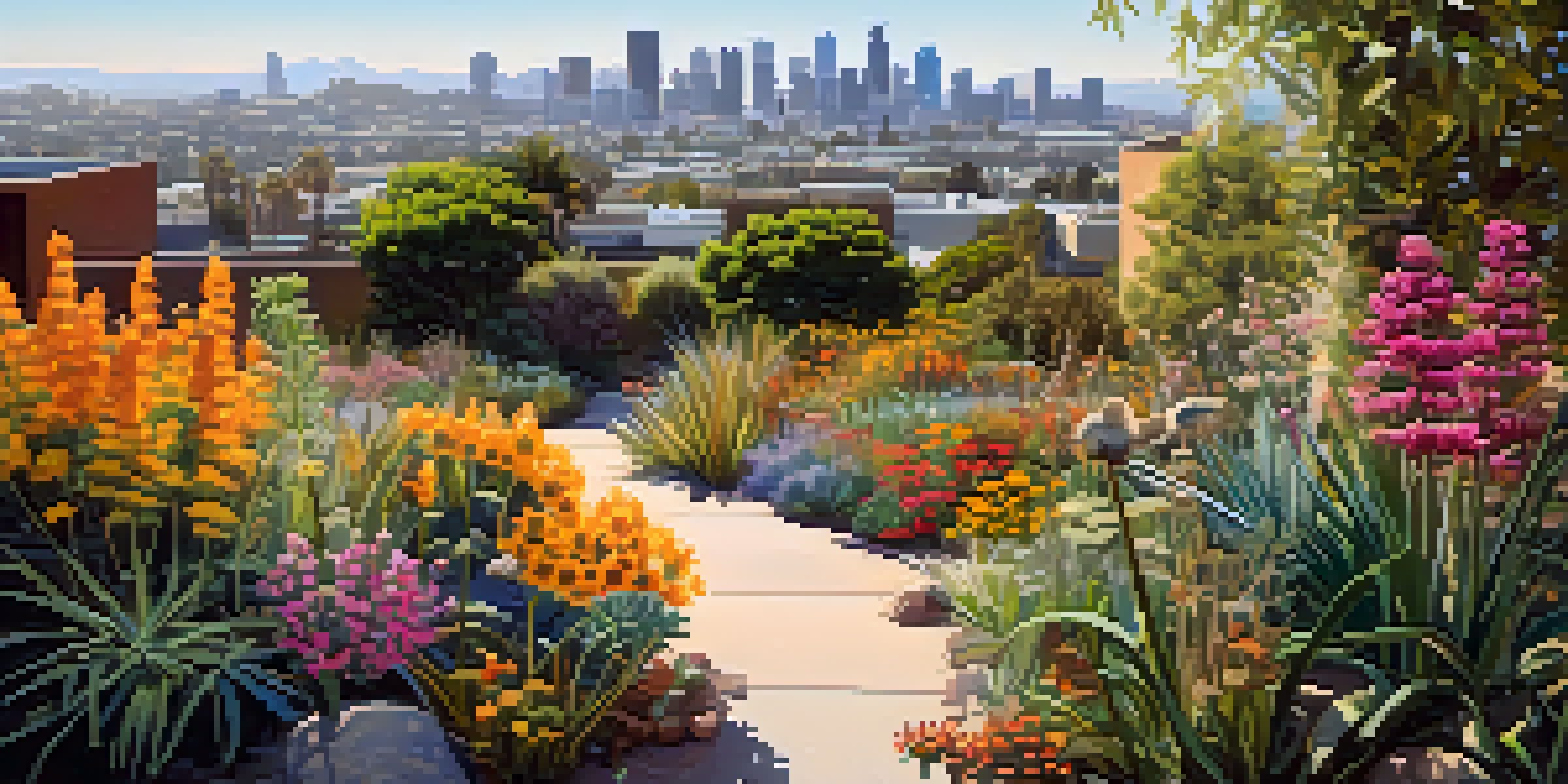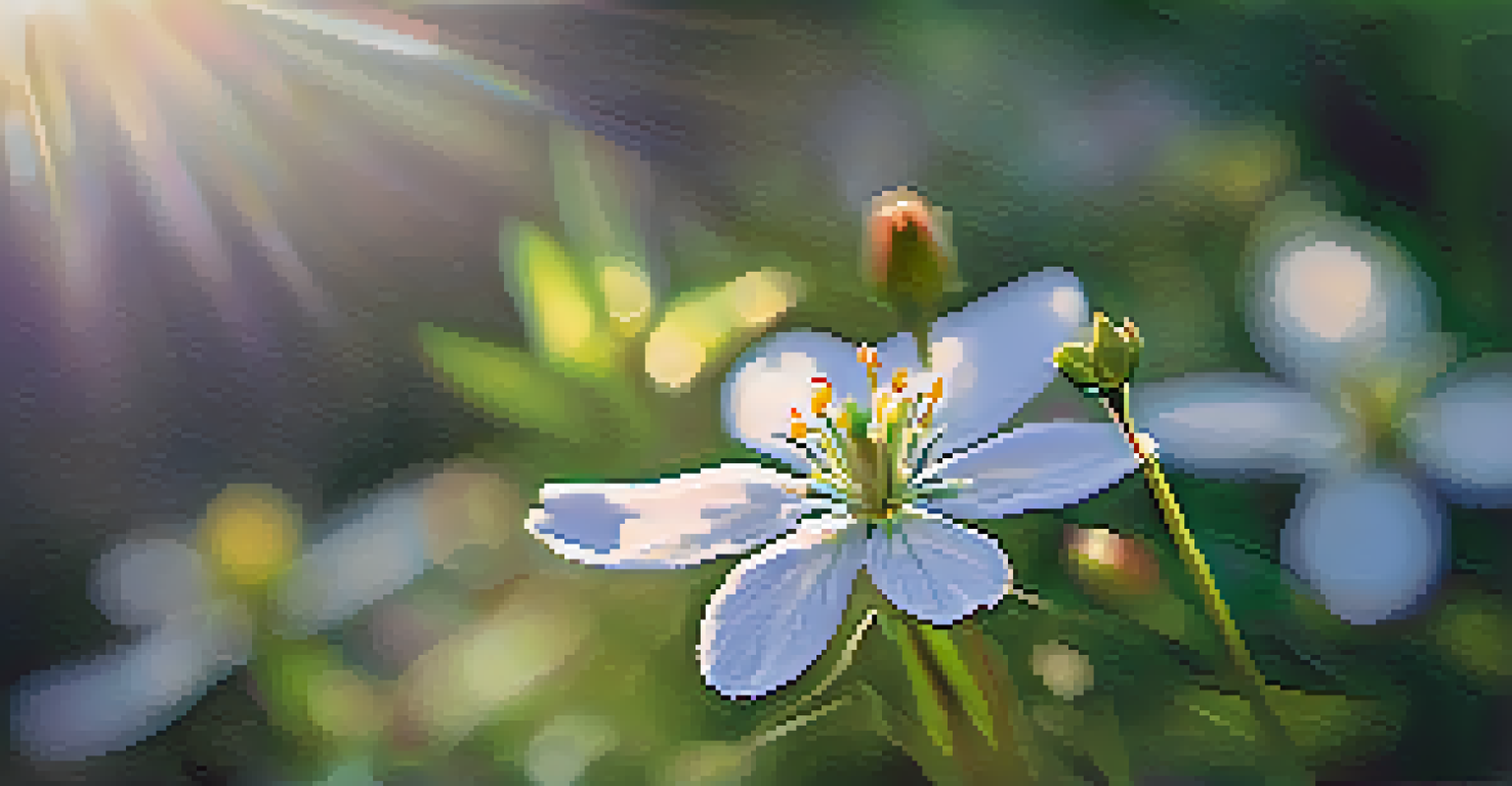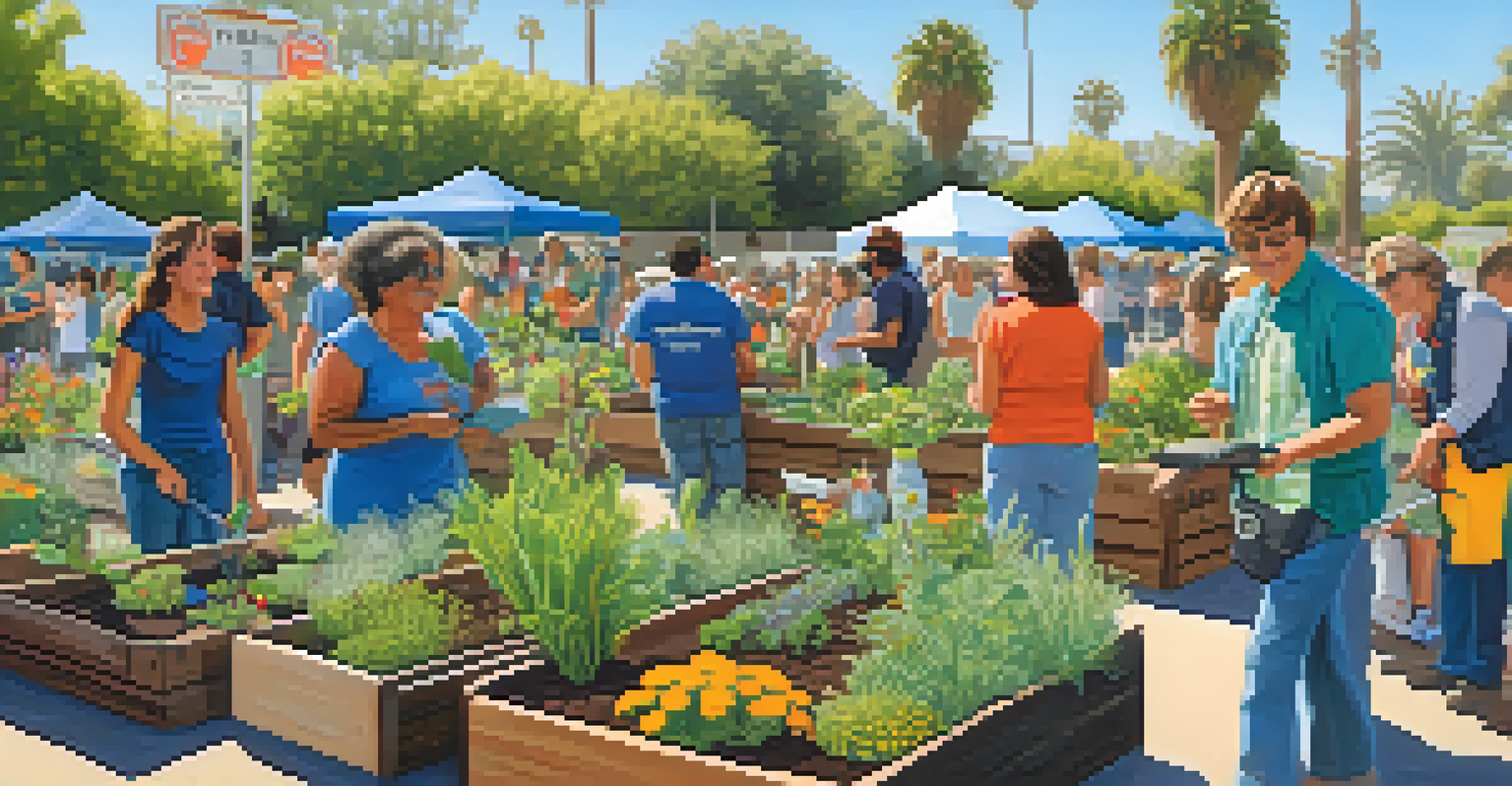Native Plants: Supporting Wildlife in Urban Los Angeles

Understanding Native Plants and Their Importance
Native plants are species that have evolved in a specific region over thousands of years. They are adapted to the local climate, soil, and wildlife, making them essential for maintaining ecological balance. In urban areas like Los Angeles, these plants play a crucial role in supporting biodiversity.
The future will be green, or not at all.
When native plants thrive, they create habitats for various wildlife, including birds, insects, and small mammals. This interconnectedness not only beautifies the city but also contributes to a healthier ecosystem. By fostering these plants, we can help sustain local fauna that might otherwise struggle in urban settings.
Moreover, native plants often require less water and maintenance than non-native varieties. This makes them an ideal choice for urban gardens, where resources are sometimes limited. By choosing native, residents can enjoy lush gardens that are both environmentally friendly and low-key.
How Native Plants Attract Local Wildlife
One of the remarkable benefits of native plants is their ability to attract local wildlife. For instance, flowering native plants provide nectar and pollen for bees and butterflies, which are vital for pollination. This creates a vibrant and dynamic environment, buzzing with life.

In addition to pollinators, native plants also offer food and shelter for birds and small mammals. Many bird species rely on native shrubs and trees for nesting and foraging. By planting these species, urban dwellers can contribute to the survival of local wildlife, creating a win-win situation.
Native Plants Support Wildlife
Native plants create essential habitats for local wildlife, enhancing biodiversity in urban areas.
Moreover, a garden filled with native plants can act as a small oasis in the urban jungle. These green spaces not only enhance the aesthetic appeal of neighborhoods but also become crucial habitats for wildlife that needs refuge from urban pressures. It's a beautiful reminder of nature's resilience.
Creating a Native Plant Garden in Your Yard
Starting a native plant garden is easier than you might think! Begin by researching which native species thrive in your specific area of Los Angeles. Resources like local nurseries or online databases can provide valuable insights into the best plants to choose.
Nature does not hurry, yet everything is accomplished.
Once you've chosen your plants, consider grouping them according to their water and sunlight needs. This not only makes maintenance simpler but also mimics natural ecosystems. A diverse selection of plants can create layers of habitat, encouraging a wider variety of wildlife to visit your garden.
Lastly, remember to be patient! It may take some time for your garden to attract wildlife, but with consistent care, you'll soon see birds, butterflies, and other creatures enjoying your green space. It’s incredibly rewarding to witness the positive impact your garden can have on the local ecosystem.
Benefits of Native Plants Beyond Wildlife Support
While supporting local wildlife is a significant advantage of native plants, their benefits extend beyond that. For example, native plants are generally more drought-resistant, making them perfect for Los Angeles' dry climate. This can lead to lower water bills and less effort for homeowners.
Additionally, these plants help to reduce soil erosion and improve soil quality. Their deep root systems can stabilize the ground, preventing runoff and creating healthier soil over time. This means that not only do you get a beautiful garden, but you also contribute to better land management.
Drought-Resistant and Low-Maintenance
These plants are well-suited for dry climates like Los Angeles, requiring less water and maintenance.
Finally, native plants enhance the overall aesthetic of urban spaces. With a variety of colors, shapes, and sizes, they can create stunning landscapes that change with the seasons. This adds a touch of natural beauty to the concrete backdrop of the city, making it a more inviting place for everyone.
Challenges of Planting Native Species in Urban Areas
Despite the myriad benefits of native plants, there are challenges to consider when planting in urban environments. One major issue is limited space, as many urban gardens are small or have restrictions. This can make it difficult to plant a diverse range of species.
Another challenge is the presence of invasive species that may outcompete native plants. It’s essential to be vigilant and manage these invasives to create a thriving native habitat. Regular maintenance and monitoring can help ensure that native plants flourish.
Lastly, public awareness about the importance of native plants can be lacking. Many people may not understand the benefits or may prefer exotic species for aesthetic reasons. Education and community engagement are crucial in promoting the value of native plants and encouraging their use in urban landscaping.
Community Initiatives for Promoting Native Plants
Various community initiatives in Los Angeles aim to promote the use of native plants. Local organizations often host workshops and events that educate residents on the benefits of native gardening. These gatherings can help spread awareness and foster a sense of community around conservation efforts.
Additionally, some neighborhoods have started to implement native plant gardens in public spaces. These green areas not only beautify the community but also serve as educational tools, showcasing the importance of biodiversity. It’s a way for residents to directly engage with their environment.
Community Engagement is Key
Local initiatives and education are crucial for promoting the use of native plants and their ecological benefits.
Collaborative projects can also lead to larger-scale ecological restoration efforts, helping to revive habitats that have been lost to urban development. By working together, communities can make a significant impact on local wildlife conservation, creating a ripple effect that benefits both nature and residents.
The Future of Native Plants in Urban Los Angeles
Looking ahead, the future of native plants in urban Los Angeles appears promising. As more residents become aware of the ecological benefits, we can expect a growing trend toward native landscaping. This shift not only helps wildlife but also enhances the overall quality of life in urban areas.
Urban planners and local governments are increasingly recognizing the importance of green spaces and biodiversity. Initiatives to incorporate native plants into public projects can lead to more sustainable cities. This proactive approach can significantly improve air quality, reduce heat, and create healthier environments.

Ultimately, the future of native plants in Los Angeles depends on community involvement and education. By coming together to advocate for native species, residents can help shape a city that values its natural heritage while supporting its vibrant wildlife. Together, we can create a thriving urban ecosystem where both people and nature flourish.